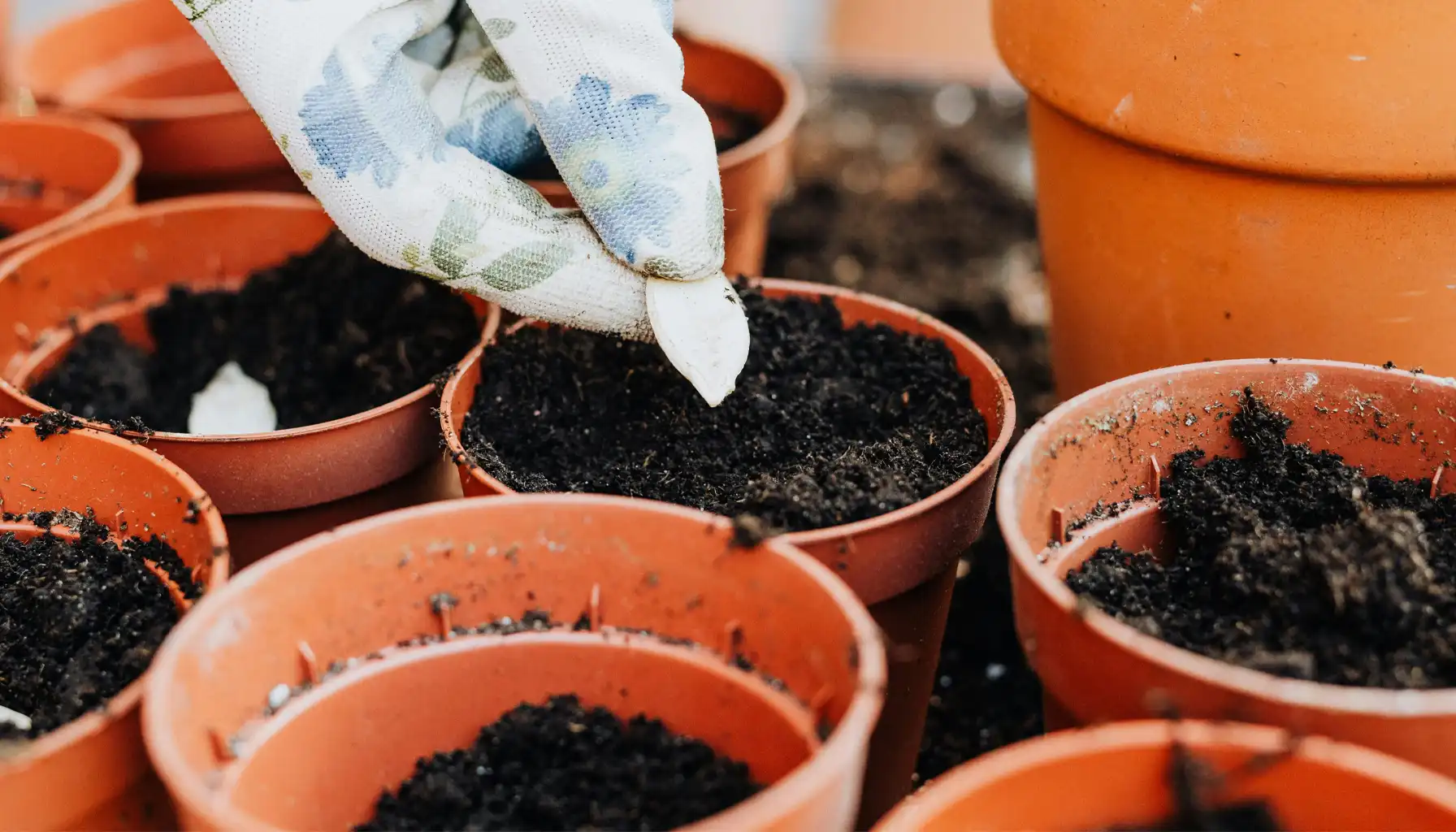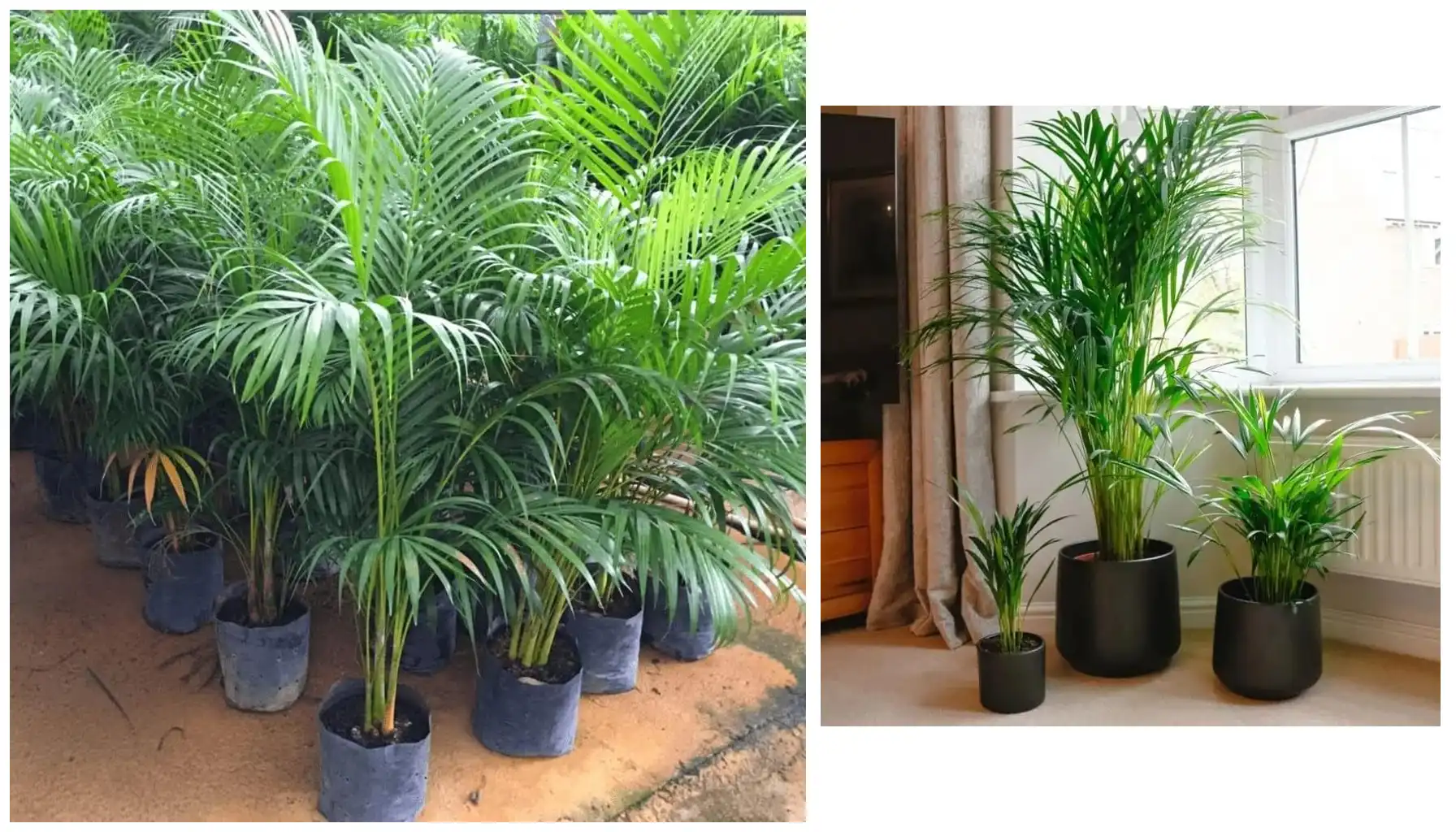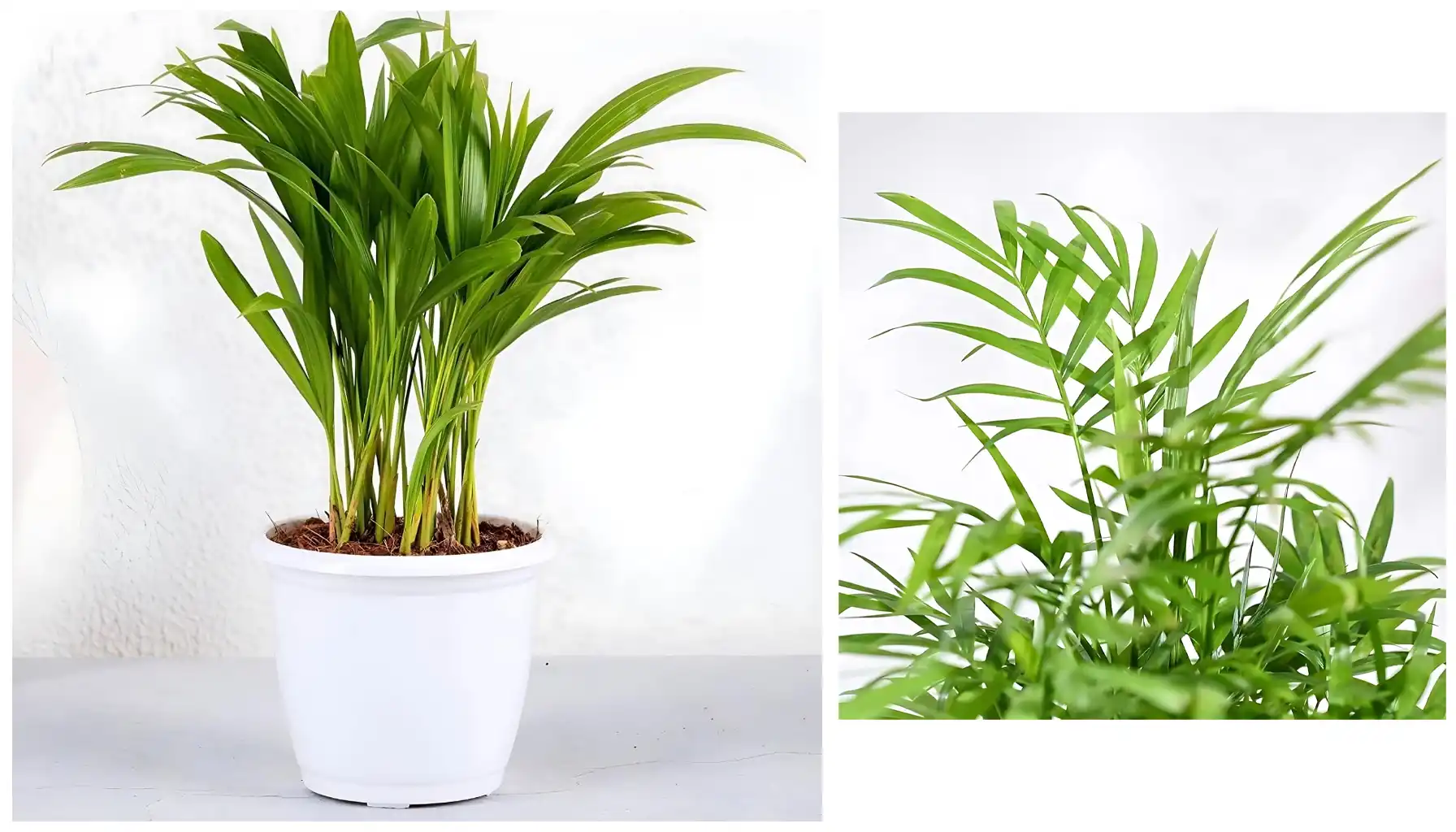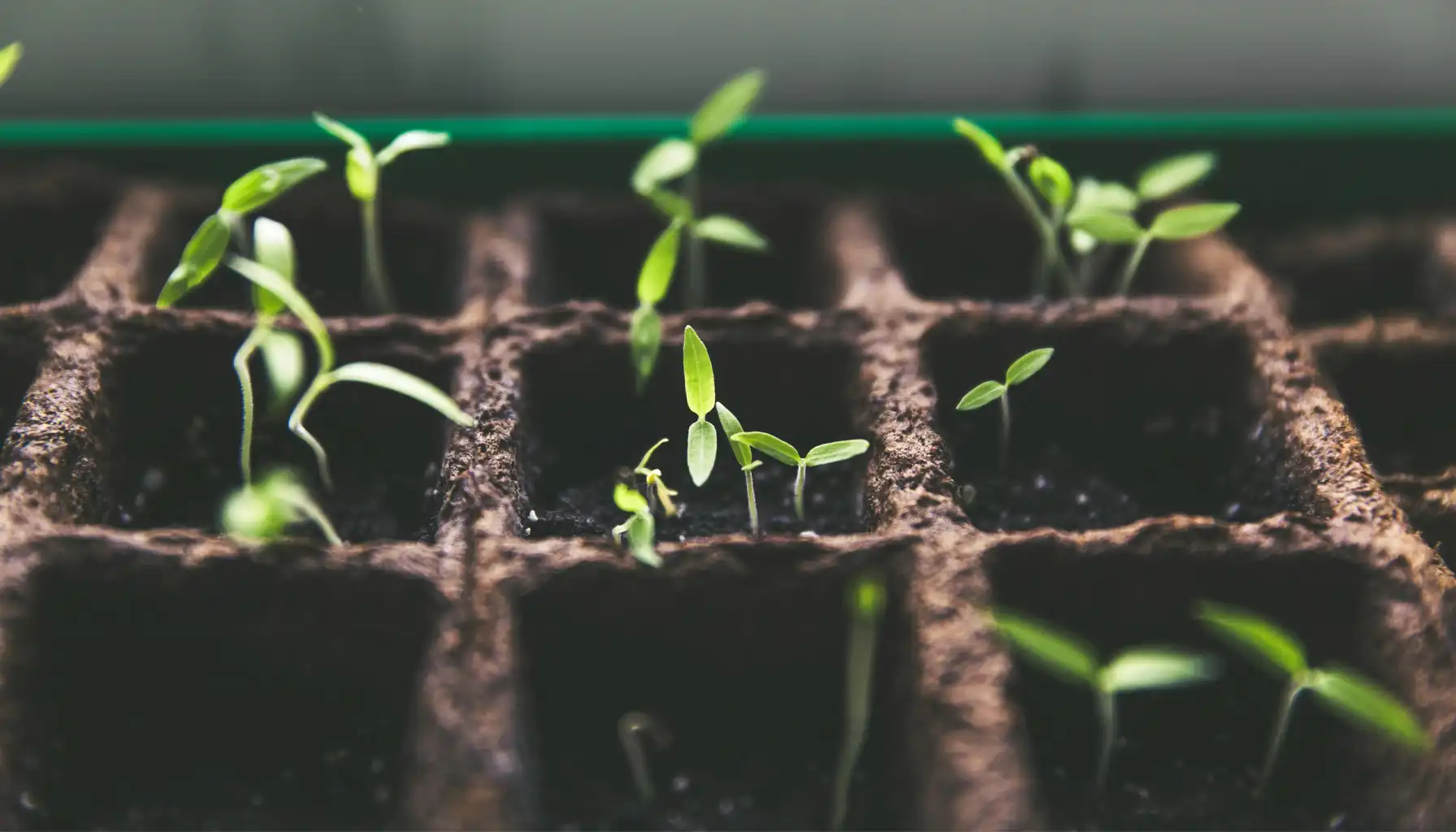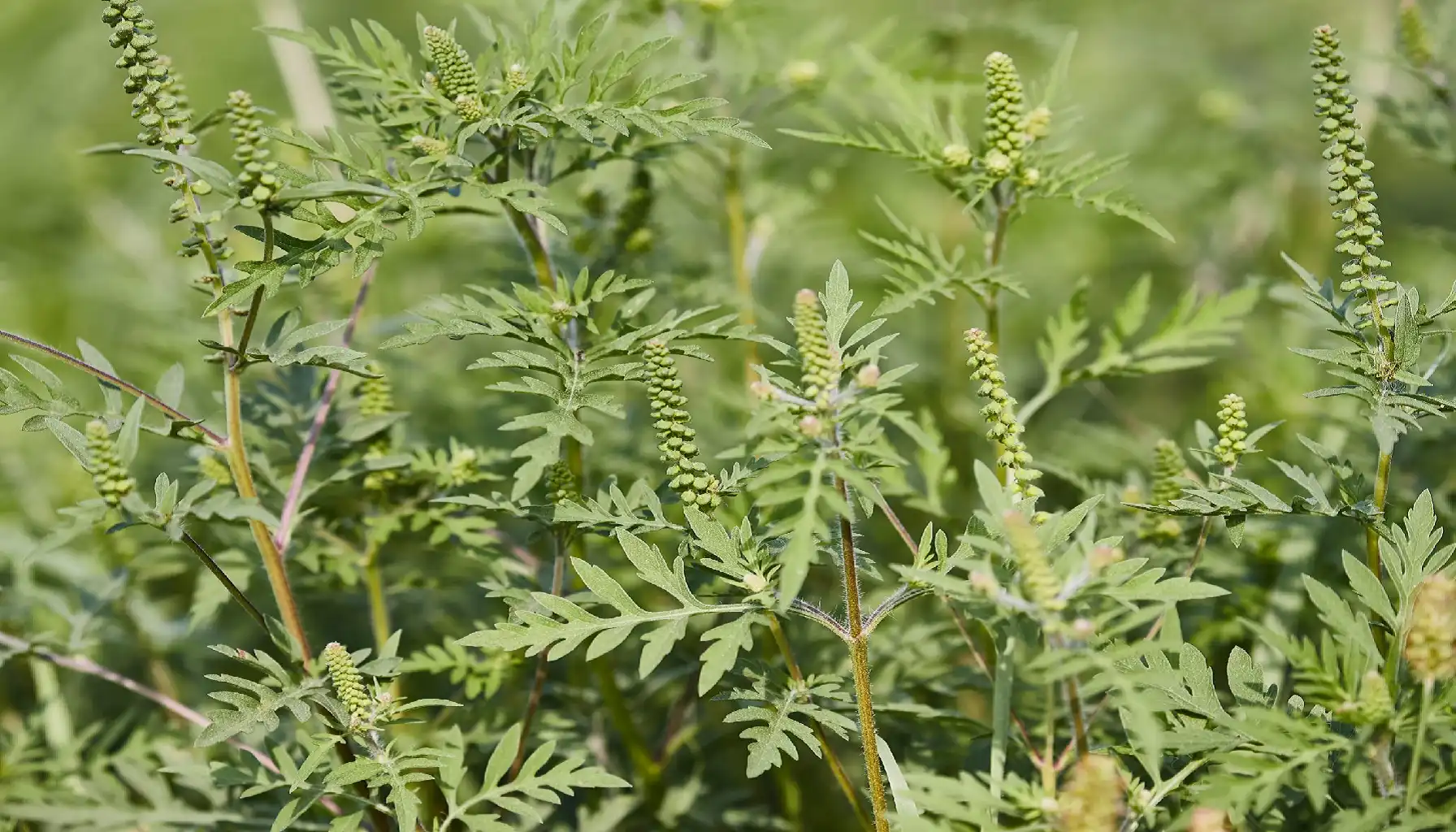Among all the tropical beauties, Dypsis lutescens is a unique thing. It both looks awesome and can be a little piece of outdoors in your home. The species is native to Madagascar. Some people call it just a “bamboo plant” or a “golden cane palm,” but it’s not actually the case!
Unlike actual bamboo, the palm is a feather-leaved monocot in the Arecaceae family, with arching fronds composed of dozens of blade-looking leaflets.
D. lutescens is a clumping palm that grows from multiple canes. These cane-like stems are smooth, yellow-green, and slightly ringed. Because of that it vaguely resembles bamboo but far less invasive.
In a controlled areca palm indoor environment, mature height is somewhere between 6 to 7 feet. Outdoors in tropical or subtropical zones, however, it can easily reach 20 feet or even more. Width varies with age and placement. If the location is bright enough it spreads more, especially if the root has enough place to grow freely.
Common Names | Areca palm, bamboo palm, golden cane palm, yellow palm |
Family | Arecaceae |
Mature Size | 6-7 ft. tall, 3-4 ft. wide (indoors), 15-30 ft. tall, 8-10 ft. wide (outdoors) |
Flower Color | Yellow |
Sun Exposure | Full, partial |
Soil Type | Moist but well-drained |
Areca palm plant tolerates partial shade but performs best in bright, indirect light. When you grow it indoors, you better place it near a south- or west-facing window.
If placed outdoors, it grows best under dappled canopy light or open sky with midday protection. It’s a perfect choice for screening, especially in patios, lobbies, or lining garden borders in USDA Zones 10-11.
Yes, it’s mostly used as a decorative plant, but it has more to it than that. Areca palm care is not that complicated. It grows rather slowly, so it’s equally suitable for both pots and landscaped beds.
The clumping root system is especially easy to manage in containers. It’s a species I often recommend to clients who want an areca palm tree that’s easy to manage but is still beautiful.
If you’re interested in tropical plants a bit more than just reading an article, I suggest reading The Book of Tropics: All You Need to Know About Palm Trees. It’s a fundamental work that’s easy to read and understand. And if you already feel like you need this palm in your home, just try searching “areca palm near me.”
Benefits of Growing Palm Indoors and Outdoors
I’ve worked with tropical plants for more than 15 years. Even after all these years I think D. lutescens to be one of the best palms to recommend. If you feel hyped and want to start, you can find an areca palm for sale online or at nurseries. What are the areca palm benefits?
1. Natural Air Filter
There are not that many decorative plants that are capable of air-cleaning. In controlled NASA studies, they ranked high for removing indoor pollutants like formaldehyde, benzene, and carbon monoxide.
Besides that, they have a high transpiration rate. Simply put, they improve humidity in dry spaces. So they’re good for bedrooms, offices, and waiting rooms.
2. Aesthetic Value with Structure
There’s something fascinating about the way an areca palm (dypsis lutescens) grows. The upright, feathery fronds fill vertical space just right. If planted in groups outdoors, they can serve as kind of a privacy protection. Indoors, they make your home look more tropical.
3. Low Demands, High Return
People don’t usually grow plants indoors because they’re very temperamental, meaning they require constant attention and near perfect conditions to grow. D. lutescens is not like that - it adapts to indoors with even indirect light and minimal water.
It doesn’t require daily attention, can survive some slight neglect, and resists common pests better than many other houseplants. Fertilizing once a month and re-potting every two years is usually enough to keep them healthy.
Also note that areca palm toxic to cats warning does not apply here - this species is actually non-toxic and pet-safe. So even if your cats like chewing everything that fits their mouths, this palm is safe. You can even use it both indoor and areca palm indoor.
How to Clean and Prune Your Areca Palm
Sure, it handles part of its own cleanup, but a little trimming damaged stems and dusting never hurts. If you’re not sure what that looks like, just google areca palm dypsis lutescens image - it’ll give you some general idea on how a healthy plant should look like.
Self-Cleaning Doesn’t Mean Hands-Off
Older fronds on the palm will brown and fall away on their own. Do not remove them prematurely! Even a frond with fading color is still important for photosynthesis. Just wait until it’s dry and brown from tip to base. Removing it too early can actually do more harm than good to your plant.
Trimming is necessary when:
You spot brown or grey canes (these are dead or rotting).
Fronds are damaged by cold, pests, or physical damage.
The plant is overcrowded and needs shaping.
Inspect questionable canes first. Slice a small patch of bark - about the size of your thumbnail. If the tissue underneath is green, the cane is still alive. Brown or black means it’s dead and should be removed.
Dusting Tip for Indoor Palms
Palm areca fronds collect dust easily because they’re narrow and feathery, but wiping each one of them individually will take ages. But there’s a little trick I share with my clients - set the whole pot in the shower and rinse the plant with lukewarm water with a handled nozzle. Please, be careful and don’t “overdo” it.
When to Divide
What is root division? Well, simply put, it's when you “multiply” your plant by separating sections of a mature plant’s root system and replanting to create a new life. Fascinating, isn’t it?
It can be done at any point in the year, but in my experience, spring is the best time. That’s when the plant is naturally preparing for new growth, and divisions are more likely to be successful.
Obviously, winter is the worst time since plant growth slows down. If your indoor areca palm is outgrowing its pot, division may be a good idea to keep your plant safely.
Step-by-Step Root Division Guide
Start with the Right Plant. Don’t try to divide young or sickly plants, it may kill them. Choose mature and healthy ones
Loosen the Rootball. Water the plant the day before. This softens the soil and makes separating the roots less stressful for the plant
Remove the Palm from Its Pot. Gently press around the edges of the container to release the rootball. Do not put pressure directly on the step, it can cause tearing
Clean and Inspect Roots. Shake off or rinse away excess soil to clearly see the roots cluster around each stem
Make Your Cuttings. Use a sharp, sterilized knife to separate four to five stems with their own root systems. Always make sure you divide both a stem and a solid root base. Areca palm toxic to dogs isn’t an issue since it’s safe for pets
Replant Divided Sections. Pot each division into a new container filled with a 2:1 mix of standard potting soil and coarse sand or perlite for better drainage. Keep the soil slightly moist but do NOT make it soggy
Position for Recovery. Place your newly potted divisions in a spot with bright, indirect light. Don’t put it under direct light until the plant re-establishes. It usually takes about a few weeks, up to a month. If conditions are correct, you’ll see it grow
Just be gentle and work slowly. If you make it too quickly, it can cause trouble. Anyway, if you're unsure about what palm species you own, remember to distinguish cat palm vs areca palm, especially when planning care or propagation - they have different needs even though they have somewhat similar looks.
Common Pests and Problems
Insect Troubles Indoors
If you grow your palm indoors, soft-bodied pests are going to be your biggest problem. They are usually spider mites, aphids, mealybugs, scale, and whiteflies. They are drawn to the palm’s tender frond surfaces, feeding in hidden clusters on the undersides of leaves or where leaflets meet the stem.
Sometimes you don’t see bugs at first, but notice sticky residue (called honeydew), black sooty mold, pale speckling, or curling tips.
Mites are another common issue. Unlike aphids or scale, they’re hard to spot without a magnifier but will leave dusty webbing and stippled damage along the fronds. If you think your palm has mites, isolate the plant and treat it quickly!
Pests can kill your palm pretty quickly if you ignore the problem or hope it goes away on its own. I recommend referring to Pests and Plants: How Do I Get Rid of Red Mites - it will help you identify and eliminate these tiny pests before they spread.
Treatment Strategy
Manual removal is an older method but still works fine. Rense or wipe down the leaves using insecticidal soap or neem oil - pests hate those. Do it every 7-10 days. Also, be sure to isolate infested plants to prevent the problem from spreading.
For outdoor palms, don’t use high-nitrogen fertilizers late in the season. Also, be sure there’s enough space between your plants so they can “breathe.” Yes, it doesn’t sound like a big problem, but it actually is.
Areca palm safe for cats is well-documented, making it one of the few true palms pet owners can enjoy without concern.
Revival Tips: How to Save a Struggling Palm
Sometimes your Areca can decline without an obvious cause. Yes, this species is resilient, but when its environment is wrong, it can signal it’s feeling sick through little cues before actually deteriorating.
If you want your palm to be healthy, you need to understand those signs and act before they become untreatable. For pet owners concerned about plant safety, the good news is that there’s no toxicity issue with areca palm cats.
Too Wet? Too Dry? Too Much Light?
If you don’t water your palm enough, it can cause crispy fronds. What if there’s too much water? It can cause yellowing and root rot. If stems smell musty, it may be the time to check the roots.
Light is also important. Too little light and your plant stretches with thin, faded leaves. Too much direct light? It can scorch the fronds. Balance is very important. If you want something to reference too, search for areca palm image to see how a healthy plant should look like.
Soil and Root Health
People often overlook substrates. Well, it’s important too! If the soil is too compacted, old, or poorly draining it can harm the roots. A healthy palm needs oxygen at the root zone. If there’s not enough of it, it can cause root rot.
What to do if you suspect there’s something wrong? Firstly, remove the plant from its pot. Inspect the roots carefully. If they’re healthy, they should be firm and white, not mushy or brown. Trim off dead roots. But don’t put your plant back in that soil! Replace it with a fresh one.
If you see your palm grows slowly, don’t panic. The areca palm growth rate is naturally slow-to-moderate. If your palm is stressed or the environment is not really suitable, it might not produce new fronds. Outdoors or in larger indoor containers, the areca palm height can reach up to 6-7 feet indoors or up to 20 feet in ideal outdoor conditions.
If you want other palms that look good but have different indoor conditions, take a look at Majesty Palm: Tropical Addition to Indoor Spaces.
FAQs
Can it grow outside?
Absolutely! D. lutescens grows both indoors and outdoors, but only in warm climates. USDA Zones 10-12, are the best, since temperatures usually don’t drop below 50F.
Is it hard to maintain?
Not really. They are low-maintenance compared to many other ornamental palms. As long as they have enough water, indirect light, and proper drainage, that should be enough. Aside from that, seasonal feeding and light pruning should be enough. This makes areca palm propagation by root division so straightforward.
How long does it live?
With proper care, a palm can live 10 years or more indoors and way longer in the right outdoor conditions. If the conditions are right, the palm can grow and stay beautiful for decades.
Sunlight vs. shade preferences
These palms prefer bright, filtered sunlight. Indoors, place it near a south- or west-facing window. Outdoors, put them in partial shade or filtered light. How do you revive a dying areca palm if things go south? Correcting lighting and watering conditions is usually the first and most important step.
Related AI Plant Finder Posts
